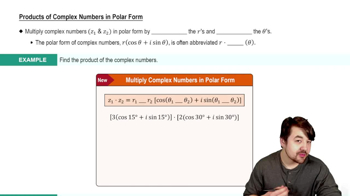Textbook Question
Find each exact function value. See Example 3.
tan (-14π/ 3)
582
views
 Verified step by step guidance
Verified step by step guidance Verified video answer for a similar problem:
Verified video answer for a similar problem:


 3:35m
3:35mMaster Intro to Complementary & Supplementary Angles with a bite sized video explanation from Patrick
Start learning